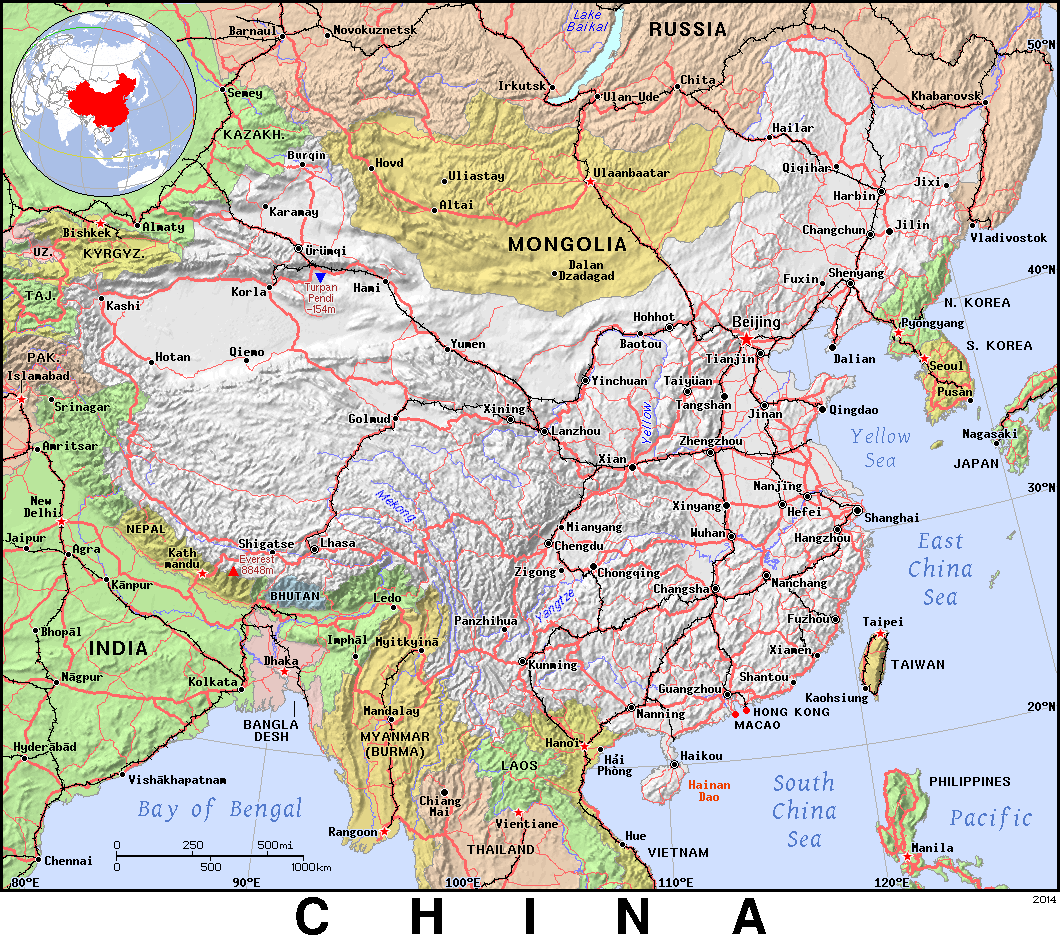
Updated January 2025.
Contents:
- Fossil Fuel CO2 Emissions
- Fossil Fuel Production
- Energy Consumption prior to partial conversions to Electricity
(PRIMARY ENERGY) - Energy Consumption after partial conversions to Electricity
(FINAL ENERGY) - Electricity Generation
The Introduction explains the units and terminology used here. Links shown in the footnotes of the charts are listed below:
Fossil Fuel Carbon Dioxide (CO2) Emissions
Fossil Fuel Production
In 2023, China was the world’s largest coal producer, the 7th largest oil producer, and the 4th largest gas producer –
Energy Consumption prior to partial conversions to Electricity
(PRIMARY ENERGY)
Fossil fuel primary energy trends are shown below. For comparison, global values in 20231 were:
- Coal 164,000PJ
- Oil 196,000PJ
- Gas 144,000PJ
As explained in the Introduction, primary energy is the consumption of energy prior to partial conversions to electricity, so the quantities below show the consumption of fossil fuels for both electricity generation, and heat by direct combustion (e.g. coal for steel manufacture or combustion of oil products by transport).
The primary energy of each non-combustible fuel, such as nuclear or wind, is the quantity of fossil fuel energy that would need to be input to a thermal power station to generate an equivalent quantity of electricity. These aren’t shown here because they’re misleading; such measure is retrospective, and the consequential total energy from all fuels is excessive, relative to that of a fully decarbonised energy system, because the inefficiency of thermal generation wouldn’t exist. Electricity trends of non-combustible fuels are shown in the following sections below.
Energy Consumption after partial conversions to Electricity
(FINAL ENERGY)
Energy consumption after partial conversions to electricity is labelled Final Energy. This accounts for energy in the form that it’s consumed, accounting for electricity separately from energy obtained by direct combustion of fuel by the end-user. For further explanation see the Introduction.
This site uses IEA data to display Final Energy for which the most recent year is 2022. Data from The Energy Institute (EI), which is more recent and used for other charts here, is unsuitable for this purpose.
Shares for most recent year of data –